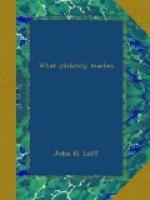There are several varieties of paper which have threads of silk or other fibre. The first of these is known as Dickinson paper, from the name of its inventor. It has one or two threads of silk incorporated in the paper in the course of manufacture. For stamped envelopes two threads were generally used. They were placed about half an inch apart and the envelope was usually so printed that the threads would cross the stamp. For adhesive stamps only one thread was used. Great Britain and several of the German States made extensive use of this paper. It has never been successfully counterfeited. The best imitation was made by gumming together two thin pieces of paper with a silk thread between them but the fraud was not difficult to detect.
Some of the United States revenue stamps were printed on a paper which had a few bits of silk fibre scattered through it. The paper called granite or silurian has a quantity of colored threads mixed with the pulp. In Switzerland blue and red threads were used, giving the paper a slightly grayish tone. In Servia only red threads were used but in sufficient quantity to make the paper appear a faint rose color.
Manila is a coarse buff paper made from manila fibre. It is generally used for newspaper wrappers.
It will scarcely be necessary to say that paper is found in a great variety of colors and that such colored paper has frequently been used for stamps.
We cannot consider paper without treating of watermarks, since they are made in the process of paper making and constitute an important feature of stamp paper. Watermarks are designs impressed in the paper pulp. The paper is slightly thinner in the lines of these designs and appears lighter when held to the light. Of course you are all familiar with this appearance from having noticed the watermarks in note paper. On rare occasions the watermark is a thickening of the paper instead of a thinning. In such a case the watermark appears more opaque than the paper. Watermarks in paper used for stamps are, of course, intended as a security against counterfeiting.
[Illustration: Watermark U.S.P. (mirrored letters)]
There are a great variety of watermarks; words, letters, figures, heraldic devices, etc., etc. Sometimes the design covers the whole sheet and at other times several stamps, but usually there is a separate watermark for each stamp. The current stamps of the United States are watermarked with the letters “U. S. P. S.”, United States Postal Service. This is so set up that the letters read in sequence from any point and in any direction. At one time several of the British colonies in Australia employed paper watermarked with a figure or word of the value of the stamp intended to be printed on it. It can readily be understood that these would sometimes get mixed and result in more of those oddities in which philatelists delight.
[Illustration: Watermark, Crown with letters CC]




